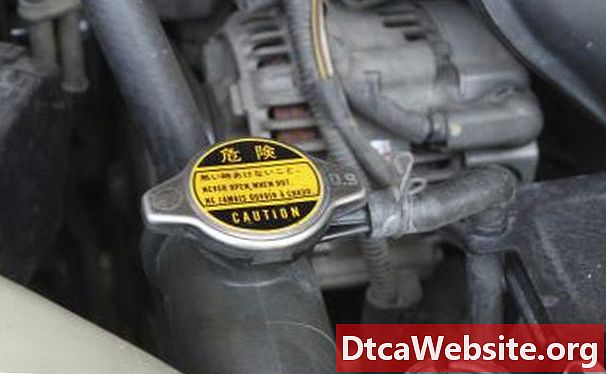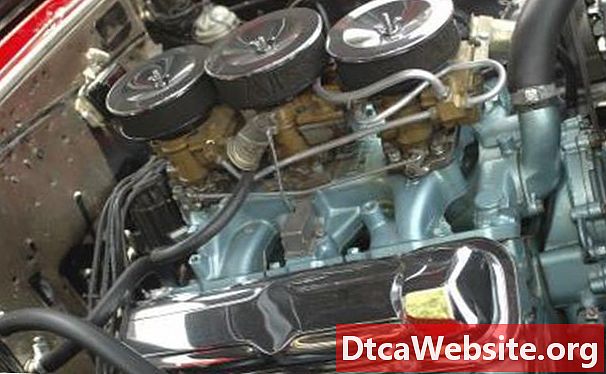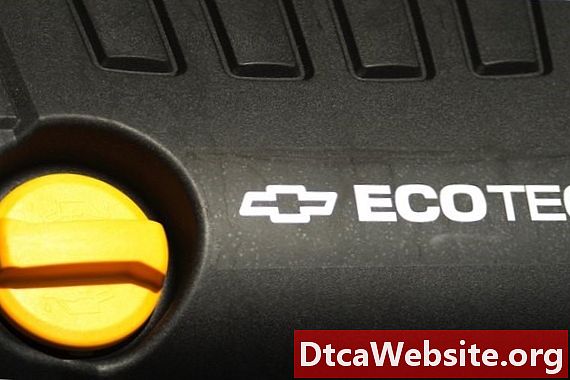
Contenu
- Radiator Cap
- Air Pockets
- Thermostat
- Heater Control Valve
- Expansion Reservoir Hose
- Water Pump Seal
- Head Gasket
- Rust and Contamination

Almost all automotive vehicles use a closed-loop, liquid cooling system. The water pump circulates coolant through the cooling tubes of the radiator, where it cools and travels through the engine passages and hoses. Coolant, or antifreeze, is designed to flow smoothly through all of the cooling passages, with no air blockages. A thermostat opens and closes to regulate the coolant flow for engine warm-up and circulation. Air bubbles in the coolant, at the radiator or expansion reservoir, means air has entered the system at some point. This can lead to overheating.
Radiator Cap
A radiator cap functions as a pressure seal, and keeps the cooling system pressure raised. It also allows pressure and coolant to vent back to the expansion (overflow) reservoir. A malfunctioning radiator cap seal can allow air to enter the system, often producing bubbles in the expansion reservoir.
Air Pockets


Air pockets in the cooling system usually result from an improper flushing procedure or partial or incomplete radiator fill-up. Air pockets causes a lower coolant volume, often leading to higher than normal operating temperatures. Air will be seen bubbling from the radiator inlet neck or inside the expansion reservoir.
Thermostat
Thermostats must open fully to allow full coolant flow during normal driving conditions, or must close to allow rapid coolant heating for cold engine start-up. The thermostat mechanism can jam open or closed, leading to under-cooling or overheating, respectively. A faulty thermostat that causes sporadic opening and closing can cause a churning and bubbling effect seen in the radiator or expansion reservoir. The rapid closing and opening of the thermostat valve can also cause a pounding noise inside the radiator, due to the slamming pulses of coolant.
Heater Control Valve


The heater control valve allows hot coolant to enter the heater core, for the purpose of heating the passenger compartment. A heater control valve with a bad seal at the valve end, or a loose heater hose connection, will allow air into the system.
Expansion Reservoir Hose
The hose connecting the radiator and the expansion reservoir must be leak-tight at the clamp connections. The hose can not be split or leaking. Air can enter the hose and produce bubbling inside the expansion reservoir.
Water Pump Seal


A failed water pump seal will allow air to enter the intake or suction side of the pump. This produces bubbling when the trapped air reaches the radiator inlet neck or the expansion valve.
Head Gasket
Blown or deteriorated head gaskets account for one of the most common and obvious causes of coolant bubbling. If the head gasket material blows between a water jacket and the inner area next to the cylinder, compression gases will enter the water jacket and air through the head and into the cooling system. Blown head gaskets produce profuse bubbling inside the radiator and expansion reservoir. Rapid overheating results.
Rust and Contamination


Radiators rust with age, but particularly when they have not been flushed and supplied with the proper antifreeze-to-water ratio. Rust, sludge and debris particles will clog the radiator core tubes, and impair the operation of the thermostat and water pump impeller. Extreme heat and rust will cause the coolant to boil, producing minute bubbles, seen in the radiator neck or expansion reservoir.


